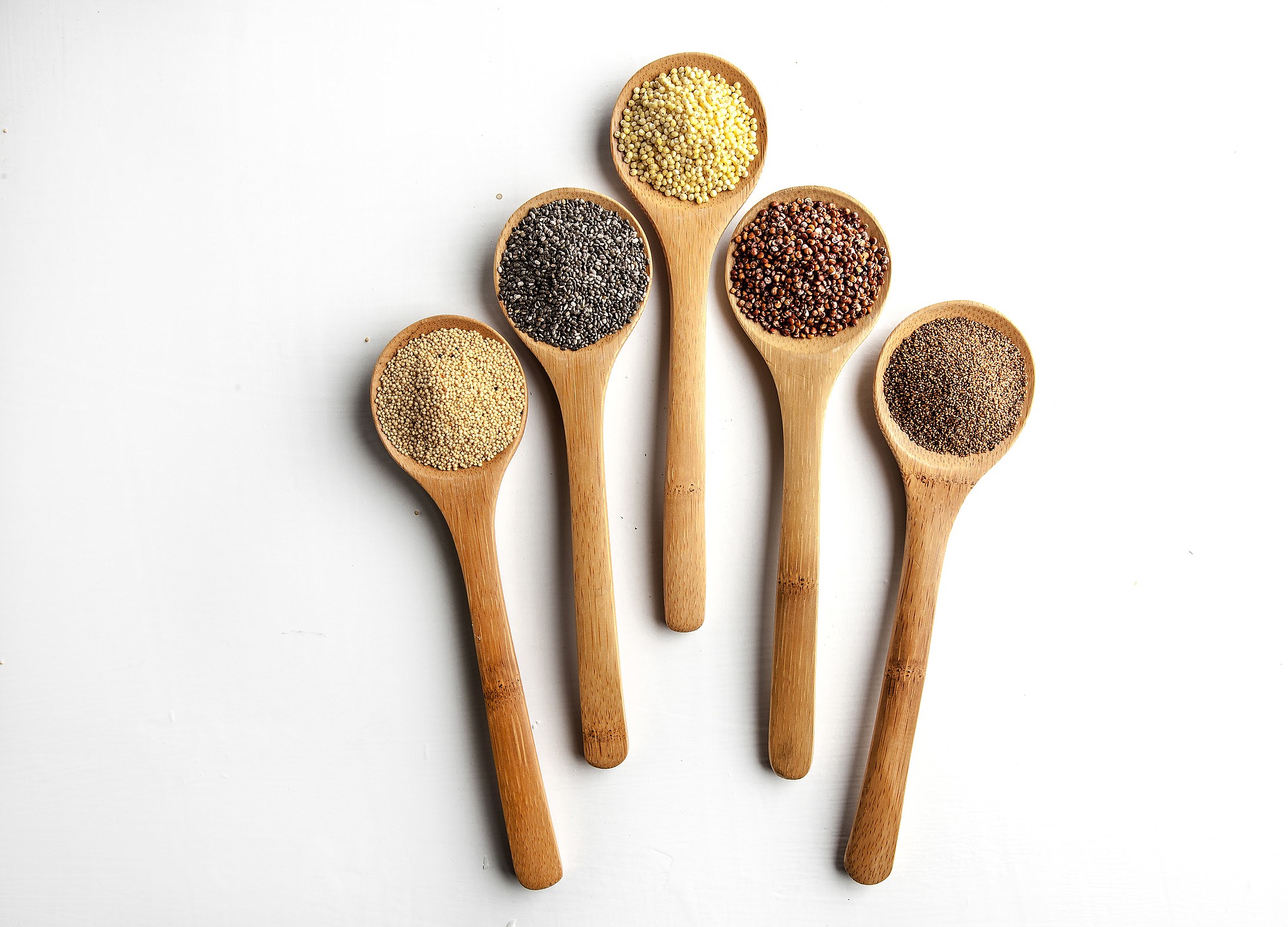o AMARANTH
Color: Sand-colored seeds.
Taste: Mild, nutty, slightly malty.
Texture: Some crunch, slight oatmeal-like consistency. Can get gluey, so mix with a drier grain such as oats.
Use: Boil whole for salads or sides. Or toast in a dry skillet.
o CHIA
Color: Oval seeds, with dark red brown markings.
Taste: Mild.
Texture: Seriously crunchy.
Use: Soups and stews as a thickener. Muffins. If not cooked, grind before using to get nutritional benefits.
o MILLET
Color: Cream to black.
Taste: Creamy; nutty if toasted.
Texture: Creamy when cooked longer.
Add: Cook whole for stews or salads. Add to breads or toast in a skillet.
o QUINOA
Color: Usually white; also black or red.
Taste: Mild, slightly grassy flavor.
Texture: Slightly crunchy.
Use: In soups and stews. Works in salads. Add to fritters and burgers.
o TEFF
Color: Tiny brown to reddish-brown seeds.
Taste: Malty.
Texture: Crunchy.
Use: Whole grains in soup. Add to vegetables or salads. Stir into couscous or rice.



